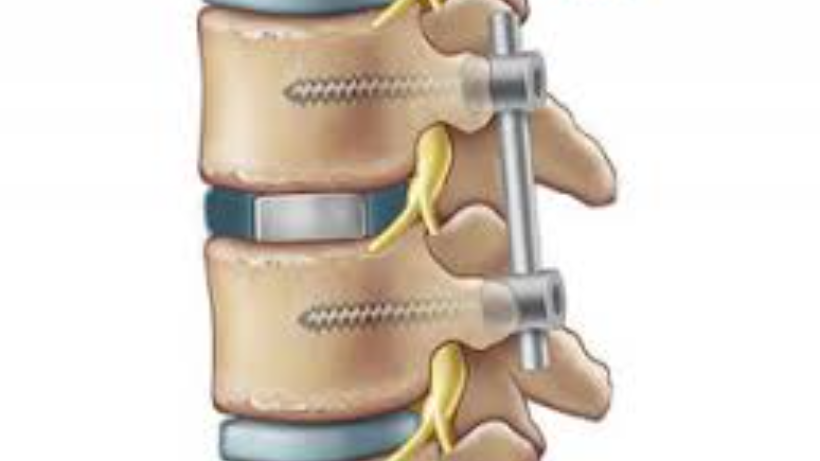
Understanding the Backbone: A Guide to Spinal Fusion Surgery
13 Oct, 2023
 Healthtrip Team
Healthtrip TeamSpinal Fusion Surgery:
Imagine your spine as a series of building blocks, the vertebrae. Now, think of spinal fusion as a construction project where two or more of these blocks are joined together. This surgical procedure aims to bring stability to the spine by eliminating excessive movement between vertebrae. Why? To address a range of issues causing discomfort, pain, or nerve damage in the back.
Transform Your Beauty, Boost Your Confidence
Find the right cosmetic procedure for your needs.

We specialize in a wide range of cosmetic procedures

Indications and Candidates:
A. Conditions that Might Call for Spinal Fusion:
If you've heard of degenerative disc disease, spinal stenosis, herniated discs, scoliosis, fractures, or spondylolisthesis, these are the issues that spinal fusion can step in to help manage. It's like giving your spine a bit of architectural support when things are going awry.
Who Might Need It:
If you find yourself in the persistent grip of chronic back pain, dealing with a wobbly-feeling spine, or facing nerve-related symptoms, you might be a candidate for spinal fusion. It's like a fixer-upper for your spine, especially when the usual methods aren’t doing the trick.
Most popular procedures in India
Total Hip Replacemen
Upto 80% off
90% Rated
Satisfactory

Total Hip Replacemen
Upto 80% off
90% Rated
Satisfactory

Total Hip Replacemen
Upto 80% off
90% Rated
Satisfactory

ANGIOGRAM
Upto 80% off
90% Rated
Satisfactory

ASD Closure
Upto 80% off
90% Rated
Satisfactory

Procedure Breakdown:
A. Preoperative Phase:
Before the surgery kicks off, there's a thorough prep phase:
- Comprehensive Medical Evaluation and Imaging: Think of it as a health check for your spine. Doctors assess the situation through detailed evaluations and scans, creating a roadmap for the surgery.
- Discussion with the Surgeon: Picture a detailed chat with your surgeon. It's not just about signing papers; it's about understanding the game plan. What's the procedure about? What are the risks and benefits? This is your time to ask questions.
- Blood Tests and Other Assessments: Just like any major project, you want to make sure everything is in order. Blood tests and other assessments ensure that your body is ready for the task ahead.
B. Intraoperative Phase:
Time for the main event. Here's what happens during the surgery:
- Anesthesia Administration: Ever had that moment when you blink, and suddenly everything feels different? Anesthesia takes you to that blink-and-it's-over state, ensuring you're pain-free and unaware during the surgery.
- Incision at the Surgical Site: The entry point, where the surgeon gains access to your spine. It's like opening the door to a construction site; things are about to get fixed.
- Removing the Trouble-Makers: Damaged discs or bone spurs causing mischief? They're taken out, paving the way for a smoother spine.
- Building Blocks for Fusion: Imagine your spine as a Lego set. Bone grafts or synthetic materials act like the glue, helping the vertebrae stick together for stability.
- Stabilizing with Hardware: Rods, screws, or plates are like the scaffolding in construction. They're there to hold everything in place while the fusion process begins.
C. Postoperative Phase:
You made it through the construction phase. Now it's time for recovery:
- Specialized Recovery Unit: Post-surgery, you're in a space where experts can monitor and assist in your initial recovery. It's like a pit stop before heading back on the road.
- Managing Pain: Medications are like the tools in your recovery toolbox. They help manage pain, ensuring you're as comfortable as possible.
- Moving Forward with Therapy: Physical therapy is your post-surgery workout plan. It's about regaining strength and flexibility, one step at a time.
- Keeping Tabs on Progress: Follow-up appointments and monitoring ensure that everything is on track. It's like quality checks to make sure the construction holds up over time.
Latest Advancements:
The construction industry is always evolving, and so is spinal fusion surgery:
- Minimally Invasive Techniques: Think of it as using precision tools instead of a sledgehammer. These techniques reduce recovery time, allowing you to get back to your routine sooner.
- Cutting-Edge Imaging: It's like having a GPS for the surgeon. Advanced imaging ensures that every move is precise, enhancing the overall effectiveness of the procedure.
- Biologics for Boosted Healing: Stem cells, the rockstars of the biological world, are now part of the fusion process. They bring their healing powers to the mix, speeding up the bone fusion and recovery process.
Preparation Tips:
- Open Communication:
- Establish a clear and open line of communication with your healthcare team. Share your concerns, ask questions, and ensure you're on the same page about the procedure.
- Follow Preoperative instructions:
- Adhere to preoperative instructions diligently. Whether it's dietary restrictions or specific medications, following these guidelines helps set the stage for a smooth surgery.
- Mental and Emotional Preparation:
- Acknowledge and prepare for the mental and emotional aspects of the journey. Understand that recovery is a process, and having a positive mindset can significantly impact your overall well-being. Consider talking to a counselor or support group if needed.
Risks and Complications:
- Infection: This is one of the most serious complications of any surgery, and it can occur after spinal fusion surgery. Infection can occur in the skin incision, in the deeper tissues around the spine, or even around the spinal cord itself.
- Bleeding: Spinal fusion surgery is a complex surgery that involves cutting and manipulating delicate tissues. As a result, there is a risk of bleeding during surgery.
- Blood clots: Blood clots can form in the legs or lungs after any surgery, including spinal fusion surgery.
- Nerve damage: Spinal fusion surgery is performed very close to the spinal cord and nerve roots. There is a small risk of nerve damage during surgery, which can lead to numbness, weakness, or paralysis.
- Pain: It is normal to experience some pain after spinal fusion surgery. However, some people may experience chronic pain after surgery.
- Pseudoarthrosis: This is a condition in which the bones that are fused together do not heal properly. This can lead to pain and instability in the spine.
- Adjacent segment disease: This is a condition in which the vertebrae above and below the fused vertebrae begin to degenerate. This can lead to pain and other symptoms.
Strategies to Prevent Complications:
- Strict adherence to aseptic techniques.
- Thorough preoperative screening.
- Monitoring and management of blood clot risks.
- Careful surgical technique to avoid nerve damage.
In summary, spinal fusion surgery, a complex but effective intervention for diverse spinal issues, necessitates informed decision-making and a collaborative partnership with healthcare providers. Understanding the procedure and actively engaging with medical experts are crucial components for achieving a successful outcome in this intricate medical process.
Wellness Treatment
Give yourself the time to relax
Lowest Prices Guaranteed!

Lowest Prices Guaranteed!
